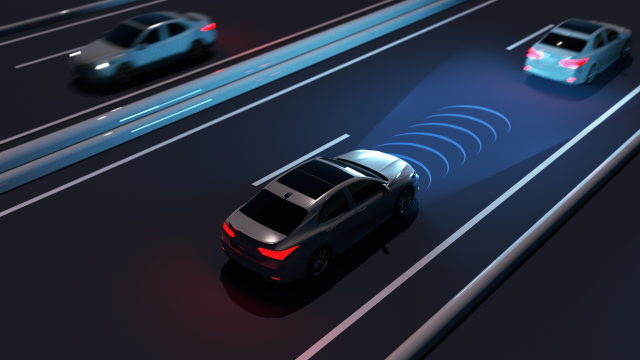Newer cars tend to come with two features that really make the thing feel really new and exciting: lane assistance and adaptive cruise control.
These features help you drive your car and can help you feel less exhausted behind the wheel. Many new cars may offer only one of these two features, but widely speaking, lane assistance is the most fascinating of the two.
And while many people may consider the combination of these technologies to be ‘autopilot’, this isn’t actually the case. Do not treat these features like autopilot.
If it’s not autopilot, though, then what are lane assistance and adaptive cruise control?
How does lane assistance work?
Lane assistance (also referred to as lane assist or lane keeping assist) is a technology that helps keep the vehicle stay stable in between two established lanes. Using cameras and sensors on the sides of the vehicle, lane assistance tracks the lines beside the driver to inform how the car steers. Around corners, the car will turn to follow and stay within the lines, as it will on straight roads.
This is best utilised on long roads where you might want some extra help in keeping away from cars passing you in separate lanes, or on long trips where the speed doesn’t change.
It’s worth noting though that it isn’t perfect. While the car detects the broken and unbroken line markings ahead of you, the rain, a shadow, or a fallen branch may cause a break in the car’s lane assistance, requiring you to steer without assistance (these things have all happened to me before).
It’s also important to realise the limitations of this feature. While lane assistance does feel like the car is in control of its own actions, it’s not. You will still need to brake in case of an emergency (though some cars will have an emergency automatic brake), you’ll still need to stop at traffic lights, you’ll still need to make lane changes and you’ll still, of course, need to keep your hands on the wheel and pay attention to the road.
Some cars, such as Teslas with enhanced autopilot or FSD packs included, offer traffic light detection and automatic lane changing, but it’s not something you can typically expect to be bundled with lane assistance as a standard feature.
Newer cars offer lane assistance as a toggleable option, similar to cruise control, and it may only be available on more expensive models.
How does adaptive cruise control work?
It’s like cruise control, but adaptive. Also commonly referred to as ‘smart’ cruise control, adaptive cruise control builds on standard cruise options that lock your speed at a set limit. On top of doing this, adaptive cruise control slows or speeds up, depending on the speed of the car in front of you, and is often paired with a distance-setting feature that lets you choose how far back from the car in front of you that you’d like to be.
It’s a great feature to have if you want to spend less time braking and want some speed assistance on the road. It’s terrific on motorways or long roads where you’re stuck behind a car in front of you for some time.
But it won’t do everything for you. While your car might alert you to speed changes when you’re passing through, for example, a school zone, you’ll need to slow your car accordingly to the set signs – the car won’t do it for you.
Do I need lane assistance and adaptive cruise control?
While they’re certainly helpful features that can take some of the stress out of driving, it’s difficult to call these features essential. They’re helpful, sure, and if you’re upgrading from a car built 20-or-so years ago, you’ll definitely consider lane assistance and adaptive cruise control as extremely useful features (as you would with modern car camera tech), but there are no instances where you’d need these.
If you’d like a little bit of help on the road though, and if you’re after great vehicle safety, these features absolutely help.
